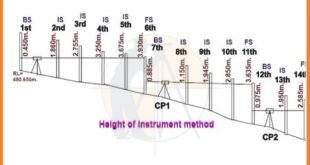What is drone Surveying and benefits of drone Surveying.
In this article we will discuss about the topic of drone Surveying and Benefits.

1 – What is drone Surveying.
A drone Survey is an aerial Survey to capture the aerial data of the Survey land from the different angles. Drones are fitted with the multispectral cameras and sensors.
The drone Survey is provides us with numerous digital prints of site. Each image is linked with coordinates so that we can process and create detailed 2-D and 3-D maps.
2 – Is the drone land Survey accurate.
Yes. The Drone flies at the lower altitude to the capture high resolution data. Several images are taken from the different angles and they are overlaid to form final data. So there is no scope for the errors in the survey maps formed by the drone Survey.
Learn More
The Role and Responsibilities of QTY Surveyor in the Current Field Of Construction Sector
In the traditional Survey, We come across human and instrumental errors. But as the drones are unmanned data collectors we find them more accurate and much faster.
3 – What is the benefits of drone Surveys.
1 – Reduces working time.
A traditional Survey takes several days or even weeks to the complete work. Same task can be completed within few hours in the drone Surveying.
2 – Less manpower.
The drone Survey does not need Land Surveyors or more people to do job. The data can be collected much more quickly and efficiently that in turn saves operative manpower.
3 – Cost Effective.
The Drones can be used as and when required to capture the data. The Drone Survey saves us extra time & required manpower and hence they are cost effective.
4 – Provides accurate data.
The drones can produce thousands of the measurements captured from the all angles. So there is less scope for the errors when compared to manual mistakes or errors in the traditional surveying.
Learn More
Best House Plans
5 – Accessibility.
The drone can fly in all nooks and corners of our earth to collect the data. In the hilly areas and terrains where is the manual reach out is impossible, drones are the best options for survey work.
6 – Tracking progress.
By the using drones, we can capture snapshots of land at the various stages of the ongoing work. They can be flown at the required intervals to keep an eye on day-2-day progress of the project work.
7 – Safe to work.
In the traditional Surveying the workers are put at the risk while accessing difficult areas. There are no such safety issues while we carry drone Surveying. Hence they are safe to the work in all such unreachable topographical regions.
8 – No dispute.
The drone Survey provides visualized data so that non surveyor can understand work progress. Due to this visual source of the information, there is no chance of the disputes between the two parties.
Learn More
-
Transition Curve In Highways – Purpose-Requirements-Example
-
Super-elevation And Design Formula | Advantages | Highway Engineering
-
What Is Difference Between Camber and Super Elevation In Road
4 – How much does the drone Survey Cost.
The cost of the drone survey depends upon the type of the Survey and time involved in the completing the job.
However the general cost of the drone survey.
Per acre cost = INR 2000/- to INR 10,000/-
Per hour cost = INR 1500/- to INR 5000/-
5 – How does the drone survey work.
Drone Survey uses geo references and ground control points to create the data set. The aerial mapping incorporates ground control points in it is the high accuracy images. This process of the compiling data in the survey work is known as photogrammetry.

The GNSS and GPS system is used for the references to check the ground control points.
Drones are equipped with laser or lidar distance sensors – multispectral sensors – navigational systems such as GPS – altimeters and thermal sensors etc.
Once the images are captured from the different angles to the compiled data are processed by software to create 2-D or 3-D survey maps.
Other Post
To Get More information, Visit Our Official websites
.
Land Surveying & Architects
JOIN US & LIKE OUR OFFICIAL FACEBOOK PAGE
Thanks For Read This Article.
 Surveying & Architects A unique platform of Civil Engineering
Surveying & Architects A unique platform of Civil Engineering

One comment
Pingback: Types Of Scales In Surveying - Surveying & Architects